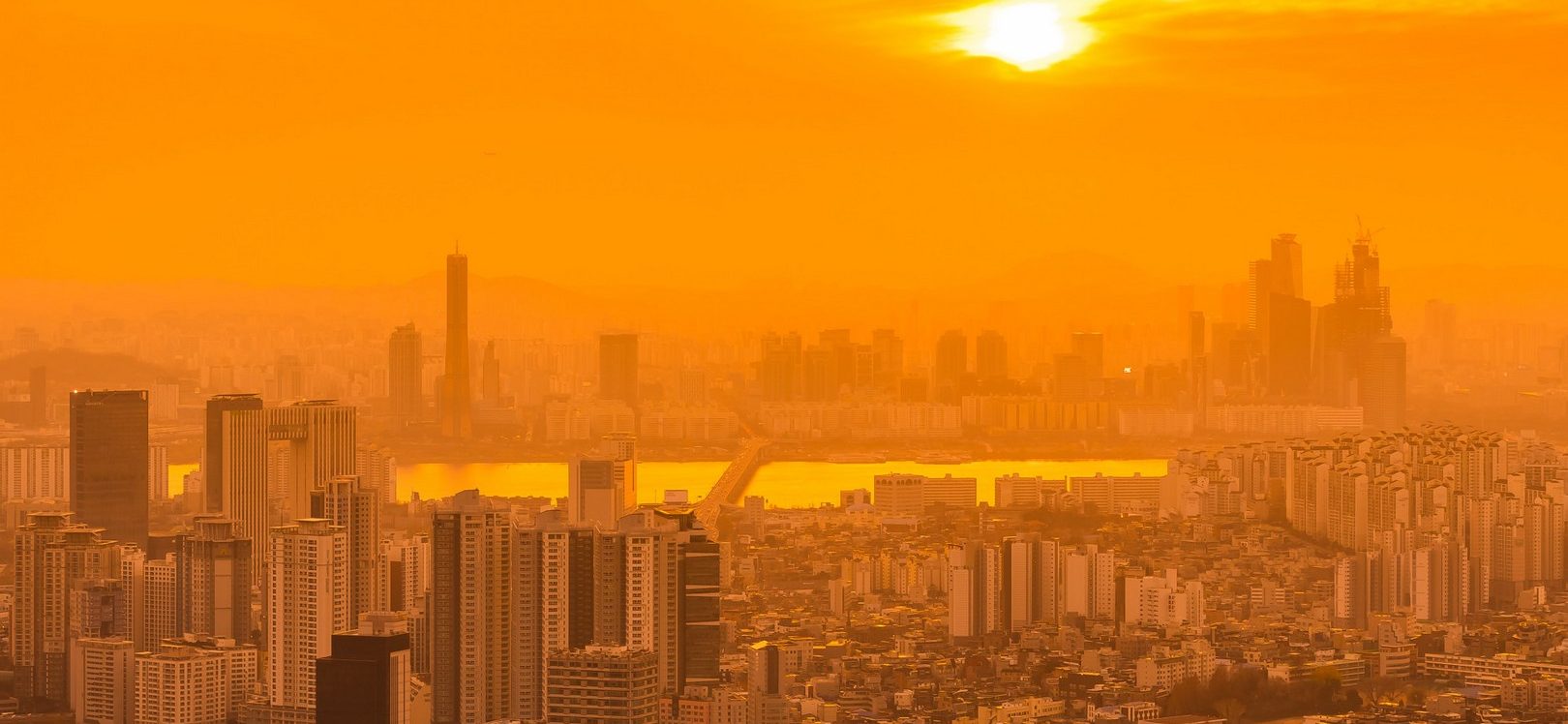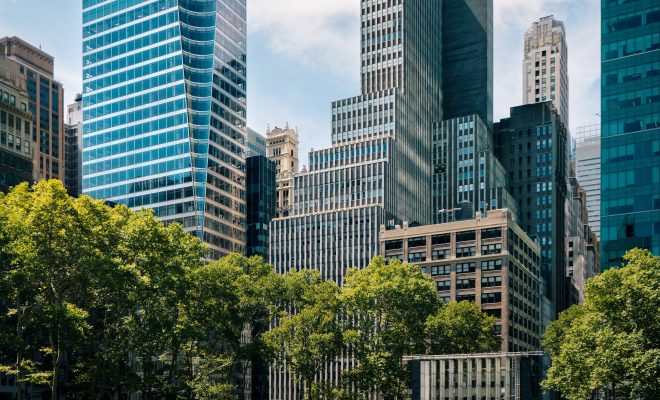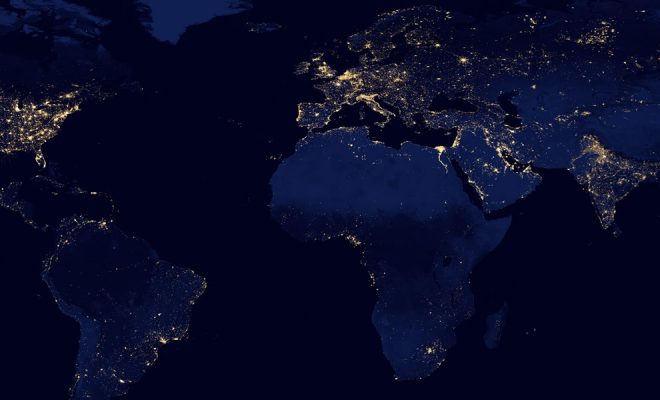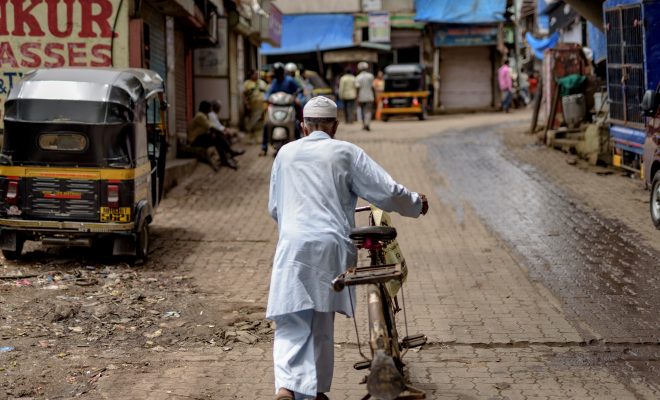
Sleeping well at night is problematic in many cities with warm summer climates. Nighttime temperatures drop little compared to daytime ones, and breezes diminish or disappear. Several reports, such as those by Lancet Countdown, have already warned of the effects of high temperatures on human health. Recently, the Climate Change and Health Reference Unit of the Carlos III Health Institute (ISCIII) published a study revealing that the effects of the so-called urban heat islands, added to climate change and pollution generated by traffic and industry, increase the risk of hospitalizations and deaths in cities and their surroundings.

The heat absorbed by cities affects the health of their inhabitants, alters local weather, and pollutes water © Lifeforstock
The urban heat island is a heating phenomenon in the center of cities due to asphalt, concrete, and steel that absorb solar radiation and energy from car engines and cooling systems. This concentrated mass accumulates much more heat than natural sites such as forests, the sea, rivers, or lakes and slowly releases it into the atmosphere. It is a phenomenon that causes “tropical nights”: very high minimum temperatures that significantly reduce the thermal gradient compared to daytime temperatures.

The urban heat island is a heating phenomenon in the center of cities due to asphalt, concrete, and steel © freepik
Heat island and climate change: a risky combination
Chilean architect Cristina Huidobro, a member of Arsht-Rock, the Rockefeller Foundation’s Center for Resilience Studies, describes this heat as a “silent killer” due to the lack of medical protocols to identify deaths caused by it. The expert assures that this effect of climate change causes more deaths than hurricanes and floods and also stresses that it is one of the most avoidable disastrous factors if action is taken efficiently in large cities.
According to a study by Professor of Physical Geography Javier Martín Vide and the Climatology Group of the University of Barcelona, in the current context of climate change, the urban heat island has ceased to be a rare local phenomenon. It has become a new meteorological risk during heat waves.
Cities with high population density and larger sizes tend to form more intense heat islands than smaller or less densely populated ones. Some data from the most significant cities corroborate this: temperatures in the center of Paris and London can be up to 2-3°C higher than in the surrounding rural areas. At the same time, Los Angeles is known to have one of the most intense heat islands in the world: temperatures in the city center can be over 5°C higher than in adjacent areas.
Urban typology is a determining factor. North American city centers, with a higher concentration and height of buildings and fewer trees, generate more significant heat islands than European cities, which tend to have more dispersed buildings and more vegetation in the streets.
Urban heat leads to increased water pollution
In addition to health, studies and research indicate that periods of extreme heat significantly impact water pollution. Runoff, caused by rain, washes pollutants accumulated in streets and buildings. Many of these come from the chemical decomposition of certain substances by heat, such as plastics, some paints, organic residues, and asphalt that can release volatile organic compounds.

In addition to health, studies and research indicate that periods of extreme heat significantly impact water pollution Vecstock/ Freepik
Asphalt in cities can easily reach values between 50°C and 75°C, which is a factor that increases the presence of elastomers due to friction with the rubber of car tires softened by heat. The increase of these residual microparticles in asphalt is one of the reasons why road engineers and road authorities consider the ambient temperature and local climate when designing roads and their maintenance. It is also a factor that can contribute to the “tire dust” phenomenon, which is the accumulation of airborne rubber particles in areas of high traffic and high temperatures, which are also washed away by rain.
Fewer cars, more trees
If the asphalt in a city like Los Angeles can reach 75ºC and concrete 65ºC, the grass temperature does not exceed 42ºC. Architectural studies have shown that planting trees around a house can reduce the use of air conditioning by 50%. In tall buildings in cities, achieving such a reduction is impossible, but it has been shown that the taller and leafier the trees are, the more they influence energy savings for cooling. In addition to absorbing carbon dioxide (CO2), the vegetation cover mitigates the heat island effect by providing shade and cooling through plant evapotranspiration.
Three percent of the planet’s land surface is occupied by cities, which become vital players in adaptive processes. The more than 6.5 billion people living in cities in 2050 will have to cope with the effects of heat islands that can seriously affect their health and worsen environmental pollution.

Climatologists and urbanists insist that greening cities should be a priority objective of any urban planning. © Freepik
Climatologists and urbanists insist that greening cities should be a priority objective of any urban planning. Not only should parks and street trees be increased, but vegetation should also reach the rooftops and terraces themselves; urban agriculture can significantly help in many cases. We have hidden nature in the cities; we must repair the damage by giving it back to it.






